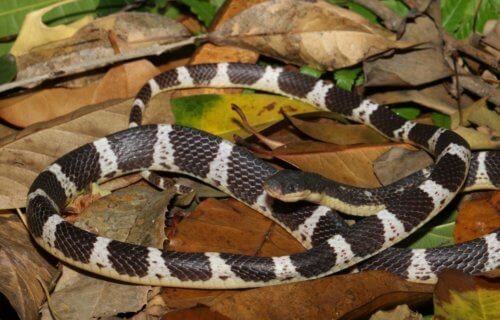GUILIN, China — It’s easy for us humans to forget that there’s still a whole lot about nature and all of the wildlife on our planet that we don’t fully understand. Case in point, scientists continue to discover hundreds of new species each year. For people who are scared of snakes, that’s not always such a great thing. Researchers have come across a venomous new snake species in Asia. Fans of the slithery creatures and pop culture fans alike however, may find it entertaining that scientists are naming it after an ancient Chinese tale, “Legend of White Snake.”
Back in 2001, famed herpetologist Joseph B. Slowinski tragically passed away after suffering a snake bite from a mysterious, young black and white krait snake while on expedition in Myanmar. Two decades later, researchers have confirmed the snake that killed Slowinski is an entirely new species.
Where does the name gets its meaning?

Biologists formally discovered the species via an analysis of samples collected between 2016 and 2019 in Yingjiang County, Yunnan Province, China. The mysterious krait is now called Bungarus suzhenae, or Suzhen’s krait, after the mythical Chinese figure Bai Su Zhen.
Bai Su Zhen is a legendary snake goddess in ancient Chinese mythology and she has quite the origin story. Zhen started life as a magical white snake, but after hundreds of years perfecting her magical craft, she was able to transform herself into a human woman and fall in love with a man. Together, the couple ran a hospital and saved many lives acting as a husband and wife medical team. Unfortunately, love between man and snake is forbidden according to the “world of the gods” and Zhen was eventually punished for her love and locked away in a tower alone for all eternity.
Traditionally, Bai Su Zhen stands as a symbol of true love and kind nature.
“The black-and-white banded krait is one of the snakes most similar to the white snake in nature, so we decided to name it after Bai Su Zhen,” study authors write in a media release.
Unique bite provides the vital clue
Another incident in 2015 helped bring these findings together. Another black-and-white banded krait bit Chinese herpetologist Mian Hou Yingjiang. Luckily, he survived the encounter.
“It hurt around the wound, and the skin around it turned dark,” Hou explains.
Following the incident, researchers noticed how strange the bite appeared in comparison to other snakes in the region. Most local snake bites don’t bring about much pain or any symptoms. That aberration led the team to realize these are no ordinary krait snakes.
As you can imagine, it’s very important to differentiate between various snakes. Depending on each snake’s venom, the difference between life and death after a bite can be a matter of minutes.
“Three species of the black-and-white banded kraits from China were previously put under the same name – many-banded krait, which would hinder appropriate medical treatment,” the study authors conclude.
The study appears in the journal in ZooKeys.
